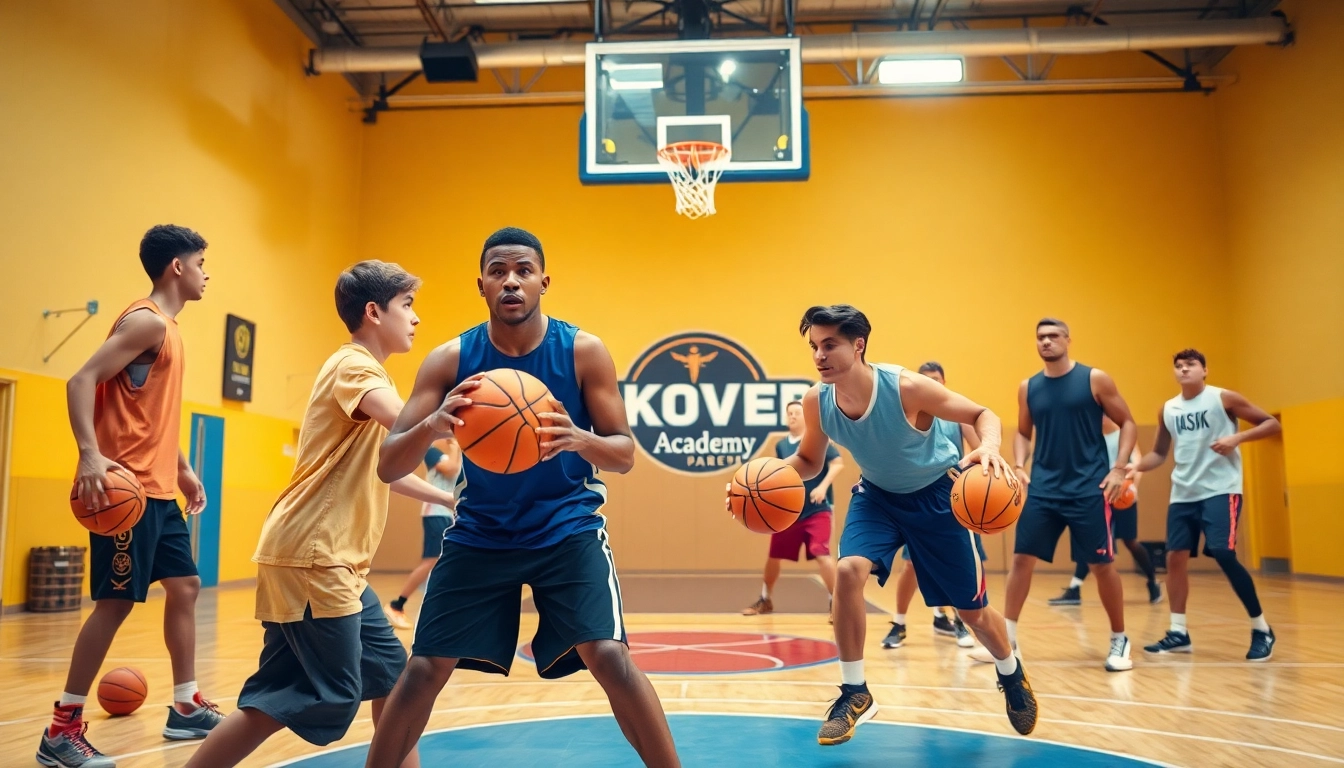Understanding the Best Basketball Training Programs
Basketball is not just a sport; it’s a way of life for millions. Whether you’re a beginner looking to learn the basics or a seasoned player aiming to refine your skills, finding the best basketball training programs suited to your needs is crucial. This article delves into what makes an effective training program, the various types available, how to choose the right one for you, current trends, and methods to monitor progress effectively.
Key Elements of Effective Training
When considering a basketball training program, several key elements should be evaluated to ensure its effectiveness:
- Expertise of Coaches: Skilled trainers with experience playing at high levels often provide invaluable insights that can take your game to the next level.
- Comprehensive Curriculum: Programs should cover fundamental skills like shooting, dribbling, passing, and defense, as well as more advanced strategies and techniques.
- Personalized Training: Effective programs often tailor their approach based on the individual player’s strengths, weaknesses, and goals.
- Physical Conditioning: A well-rounded program should also incorporate strength and conditioning training to enhance overall athletic performance.
- Feedback and Analysis: Regular assessments and constructive feedback are vital for understanding progress and areas needing improvement.
Age and Skill Level Considerations
Different age groups and skill levels require different training approaches. For instance:
- Kids and Beginners: Programs for younger players should emphasize fun and foundational skills, maintaining their interest while gradually introducing key elements of the game.
- Intermediate Players: Training should focus on refining skills, improving techniques, and understanding game concepts to prepare for competitive play.
- Advanced Players: At this level, players need specialized training that includes tactical play, game scenarios, and advanced skill enhancement.
Setting Realistic Goals for Improvement
Goal setting is an essential component of any training program. It provides direction and motivation. Establish realistic, measurable, and time-oriented goals to help track improvement effectively:
- Short-Term Goals: Focus on specific skills, like improving shooting accuracy by 10% within a month.
- Long-Term Goals: Targets could include mastering particular dribble techniques or aiming to make a varsity team after a year of training.
Types of Basketball Training Programs
Individual vs. Team Training Options
Basketball training can generally be categorized into individual and team training programs, each having its unique benefits:
- Individual Training: Offers personalized attention, allowing coaches to focus on a player’s specific skill set and desired improvements. This is particularly beneficial for players who prefer customized drills and flexibility in their training schedule.
- Team Training: Emphasizes teamwork, communication, and strategy. Ideal for players in organized leagues, it helps develop chemistry among teammates while honing collective skills and strategies.
Online vs. In-Person Training Programs
In recent years, the landscape of basketball training has expanded with online options. Here’s a comparison:
- Online Training: Offers flexibility with access to instructional videos, virtual coaching, and self-paced development. Programs like Pure Sweat Virtual Basketball School and Jordan Lawley’s online courses provide great resources for players worldwide.
- In-Person Training: Provides hands-on experience and immediate feedback. Having a coach directly observe and instruct can be invaluable for correcting mistakes and refining techniques.
Specialized Skill Development Programs
Some training programs focus on specialized areas, which can help players gain a competitive edge. These might include:
- Shooting Schools: Intensive programs dedicated to perfecting shooting techniques.
- Ball Handling Clinics: Focuses on dribbling skills, improving agility, and control with the basketball.
- Defensive Training: Programs designed to enhance defensive techniques, including footwork, positioning, and reading the opponent.
How to Choose the Right Training Program
Assessing Your Current Skill Level
Before selecting a program, evaluate your current skill level honestly. Are you a beginner, intermediate, or advanced player? This will significantly influence the type of training that will be most beneficial for your development.
Researching Coaches and Facilities
Investigate the credentials and experience of the coaches involved in potential training programs. Seek out facilities that are well-maintained and equipped to support comprehensive training.
Evaluating Program Reviews and Testimonials
Look for reviews and testimonials from former participants. These can provide insights into the effectiveness of the program, as well as the environment and quality of training.
Top Trends in Basketball Training Today
Incorporating Technology and Analytics
The use of technology in training has transformed how coaches and players analyze performance. Tools like video analysis software, performance tracking apps, and even basketball-specific wearables can provide critical insights into a player’s strengths and areas for improvement.
Focus on Mental Conditioning and Game IQ
Understanding the game mentally is just as crucial as physical skills. Programs increasingly focus on teaching players situational awareness, decision-making processes, and strategy comprehension. Mental conditioning techniques can help build resilience and focus during high-pressure moments.
Popularity of High-Intensity Training Routines
High-intensity training regimes have gained traction in recent years, emphasizing conditioning, agility, and explosiveness. Players engage in drills that replicate real-game scenarios, improving their stamina and preparedness for competitive play.
Monitoring Progress and Results
Setting Key Performance Indicators (KPIs)
Key performance indicators help measure progress effectively. These could include metrics like shooting percentage, average points scored in practice drills, or successful completion rates of certain skills learned.
Utilizing Video Analysis for Skill Improvement
Video analysis has emerged as a powerful tool in skill development. By recording training sessions or games, players can visually assess their performance and identify areas needing refinement.
Feedback Mechanisms and Adjusting Training Plans
Constructive feedback is essential for continuous improvement. Players should engage with their coaches regularly to discuss progress and make necessary adjustments to their training approach based on feedback received.



